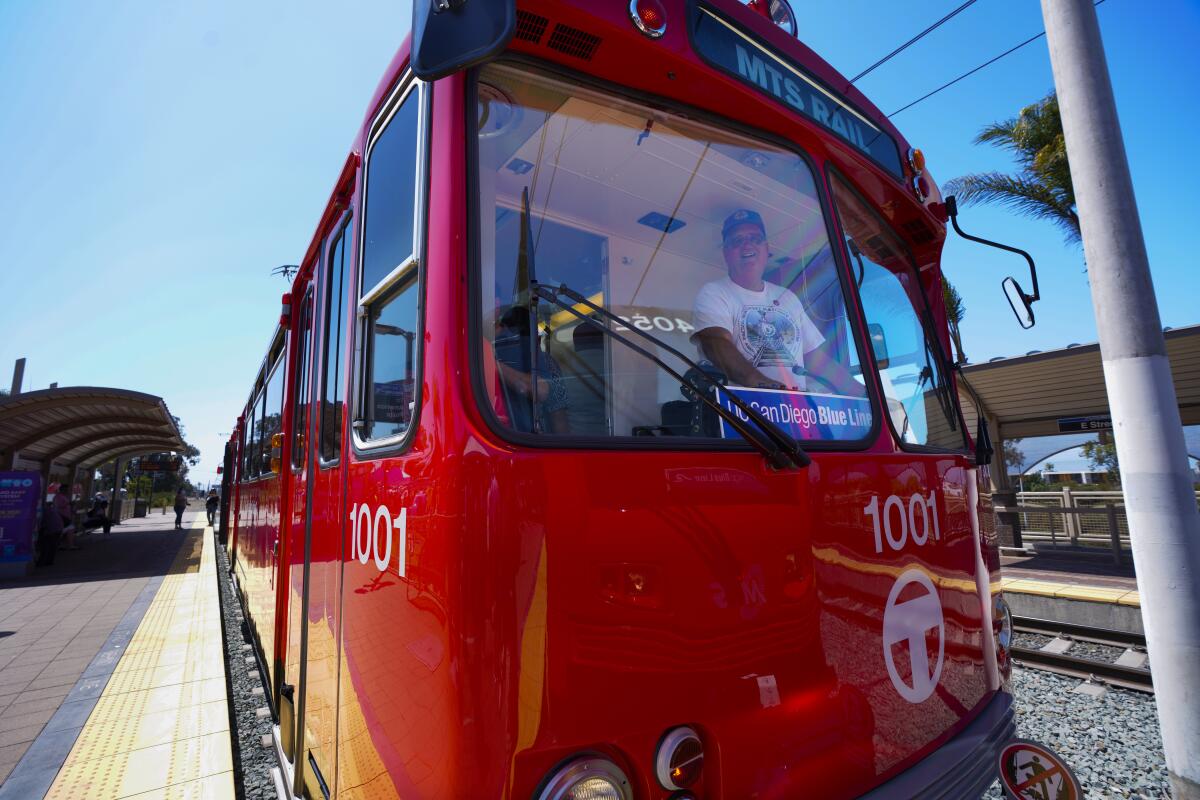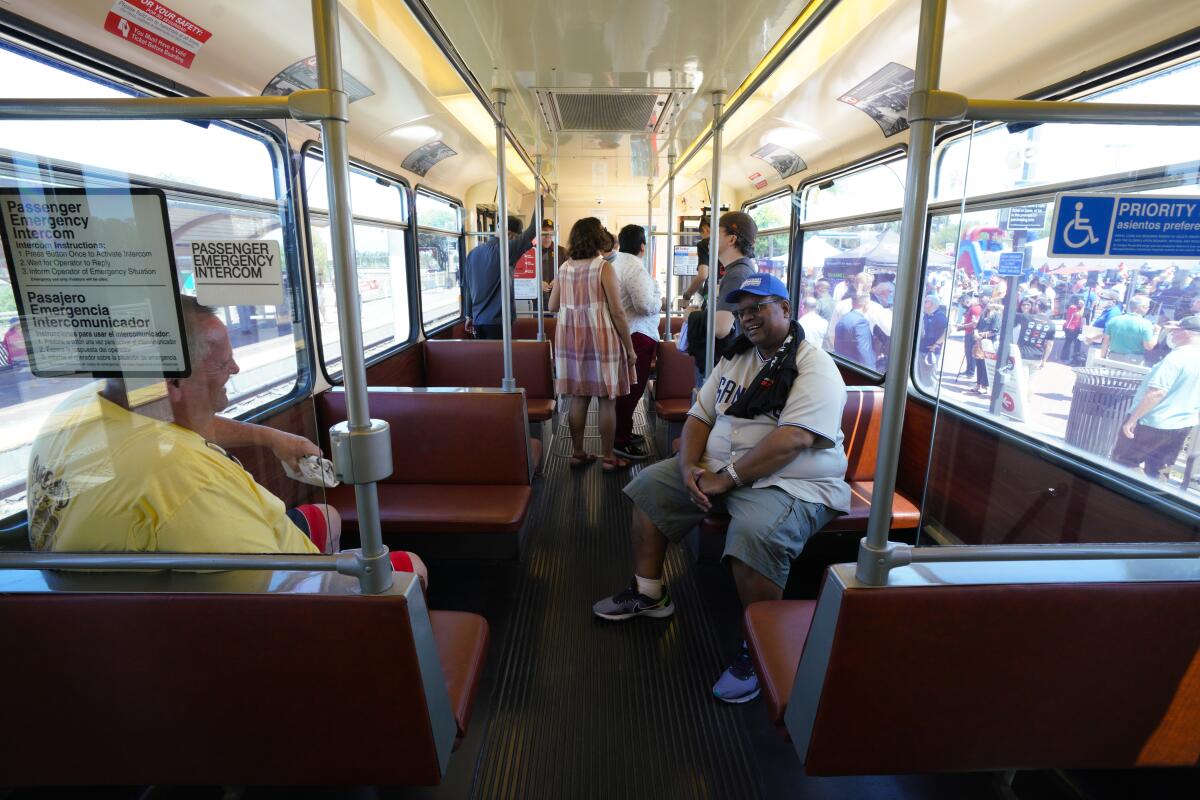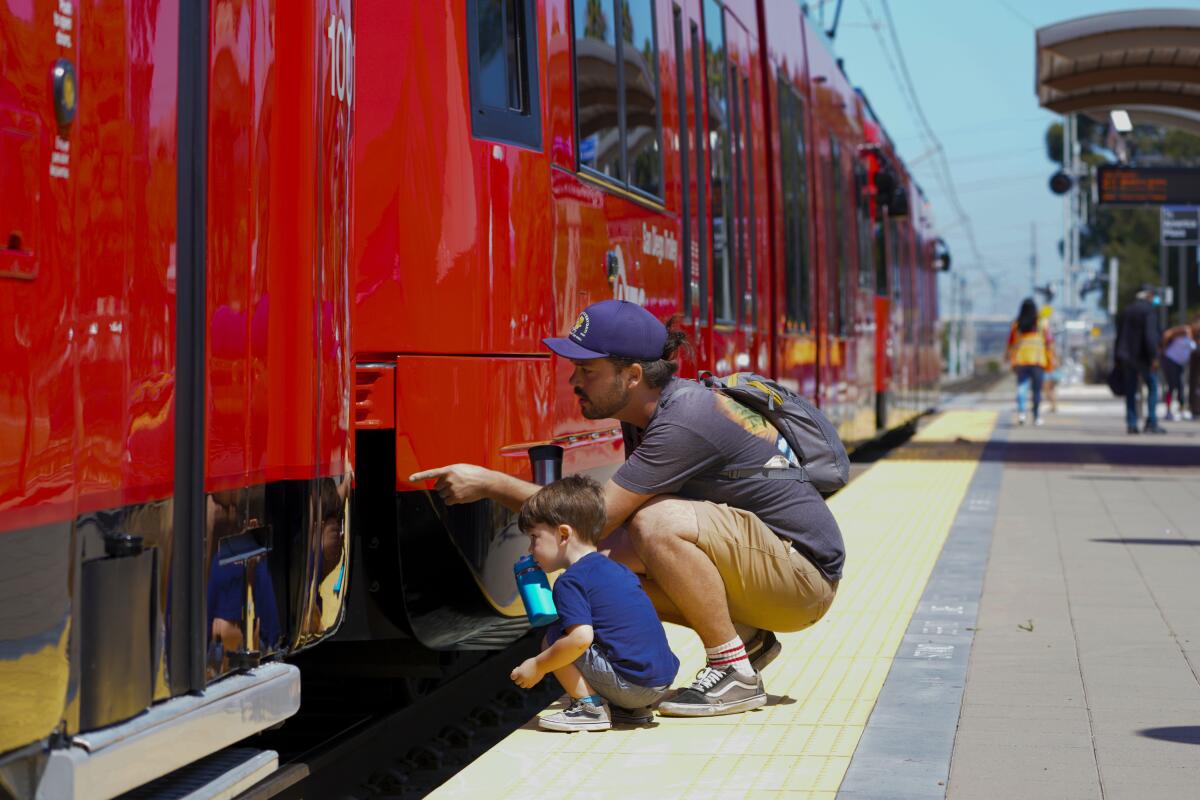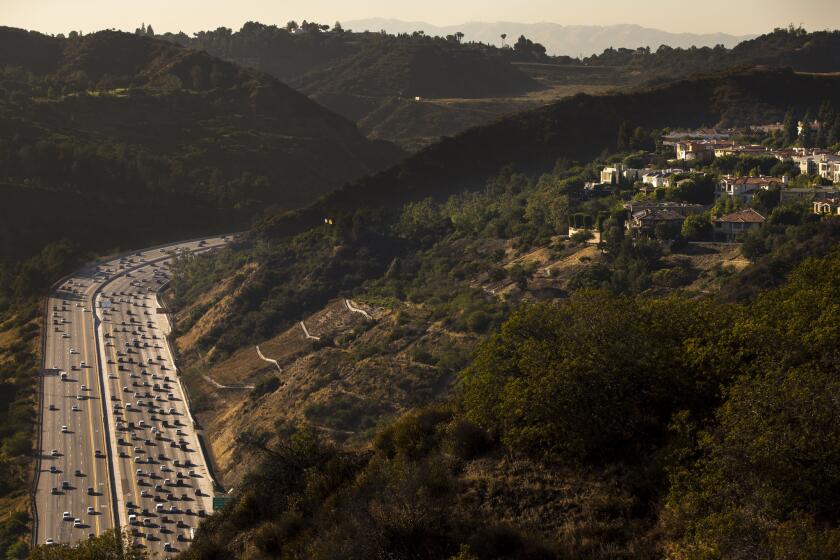40 years on, San Diego celebrates its Trolley system

- Share via
CHULA VISTA, Calif. — A 40th birthday party — complete with local dignitaries, ’80s music and a festive birthday cake — drew nearly 1,000 people to the E Street Transit Station in Chula Vista on Saturday morning.
The guest of honor: the San Diego Trolley. The bright-red light rail line, star of the San Diego Metropolitan Transit System, first started rolling down the tracks 40 years ago on a 16-mile route between downtown San Diego and San Ysidro, at the U.S.-Mexico border.
It now serves 53 stations over more than 53 miles on the Blue Line, Orange Line, Green Line and the weekend-only vintage Silver Line. The San Diego Trolley is considered the oldest second-generation light rail system and has spawned imitators in more than 20 cities, including San Jose, Portland and Buffalo.
The final leg of the Metro subway that eventually will take riders from downtown L.A. into the Westside broke ground on Monday.
Along the tracks at the E Street station Saturday, the MTS allowed partygoers to hop on and off its first car — the newly refurbished 1001 — while dignitaries feted the light rail line that has stretched out to El Cajon and Santee, moved into Old Town, stopped at San Diego State and is currently ready to extend to UC San Diego and University Town Centre.
Among those celebrating was Dario Ocano, a 57-year-old Chula Vista resident who uses a wheelchair. Ocano, a National City native, has been a regular Trolley rider since 1981 and has depended on public transportation to get him around the county since 1978.
Ocano has used crutches and walkers to assist his movement since he contracted polio at 8 years old. He said he remembers well the days when his access to the Trolley was limited, with its high stairs for passengers to climb.

Then, there was only one area for those in wheelchairs to enter the Trolley — via ramp from one specific car. And, he said, if there was already a person in the designated place for a wheelchair on the train, he would have to wait 15 minutes for the next opportunity to embark.
“The Trolley has meant a lot to me over 40 years,” Ocano said. “What I like about riding the Trolley is you get to meet people, you get to go places, and it’s all handicapped-accessible. It helps me get around town and go where I need to go, like my doctors’ appointments.”
The San Diego Trolley is on its fifth generation of light rail cars, and they have always been built by Sacramento-based Siemens Mobility Inc. The first cars cost about $825,000. Today’s tech-centered versions with all their bells and whistles — and low floors for easier access — cost nearly $4 million apiece.
Robin Stimson, vice president for business development for Siemens, said trains will continue to become more sophisticated. Stimson said the company is currently building 47 new cars for the coming extension in San Diego.
Cost of Metro rail line through the Sepulveda Pass soars to $13 billion
In an interview Friday, MTS Chief Operating Officer E. Wayne Terry, who has been with the Trolley since the start and wrote the system’s training programs and procedures, waxed nostalgic about some of the original cars. More than 10 years ago, many found new life in the province of Mendoza in Argentina, where 18 Trolley cars are part of the Metrotranvía Mendoza light rail system. More will be on their way in the future.
“It’s a testament to how we maintain our cars,” Terry said. “They have over 2 million miles on them. We thought we would have 25 years with them and then get rid of them, and there they are getting another 20.”

Alpine resident Jim Lundquist, one of the Trolley’s original two drivers in 1981 — trained by Terry — recalled the lack of air conditioning and schedule snafus that were hallmarks of the early going. But he also said he developed friendships with many of his regular riders and reminisced about being part of many celebrations on the Trolley over the years.
Chula Vista Mayor Mary Salas, one of the many public leaders who shared personal stories about the Trolley, grew up near the tracks and recalled loud freight trains rattling her house. Her parents rejoiced at the far less raucous sounds made by the Trolley. She said she still enjoys taking the Trolley to baseball games at Petco Park, especially after a Padres victory.
San Diego Mayor Todd Gloria said that he is “laser-focused” on the future of transit in the San Diego region and that it will be directly connected with the trolley. He recalled taking the No. 25 bus to get around as a youngster growing up in Clairemont. He said having the Trolley now extending to his old neighborhood “will be transformational.”
Officials all touted the Trolley as instrumental to San Diego County’s economic growth, supporting the San Diego Convention Center, providing cross-border connections and dependably getting people to and from major events such as the Super Bowl, Holiday Bowl, Padres games and concerts.
More to Read
Sign up for Essential California
The most important California stories and recommendations in your inbox every morning.
You may occasionally receive promotional content from the Los Angeles Times.
















